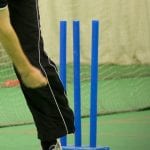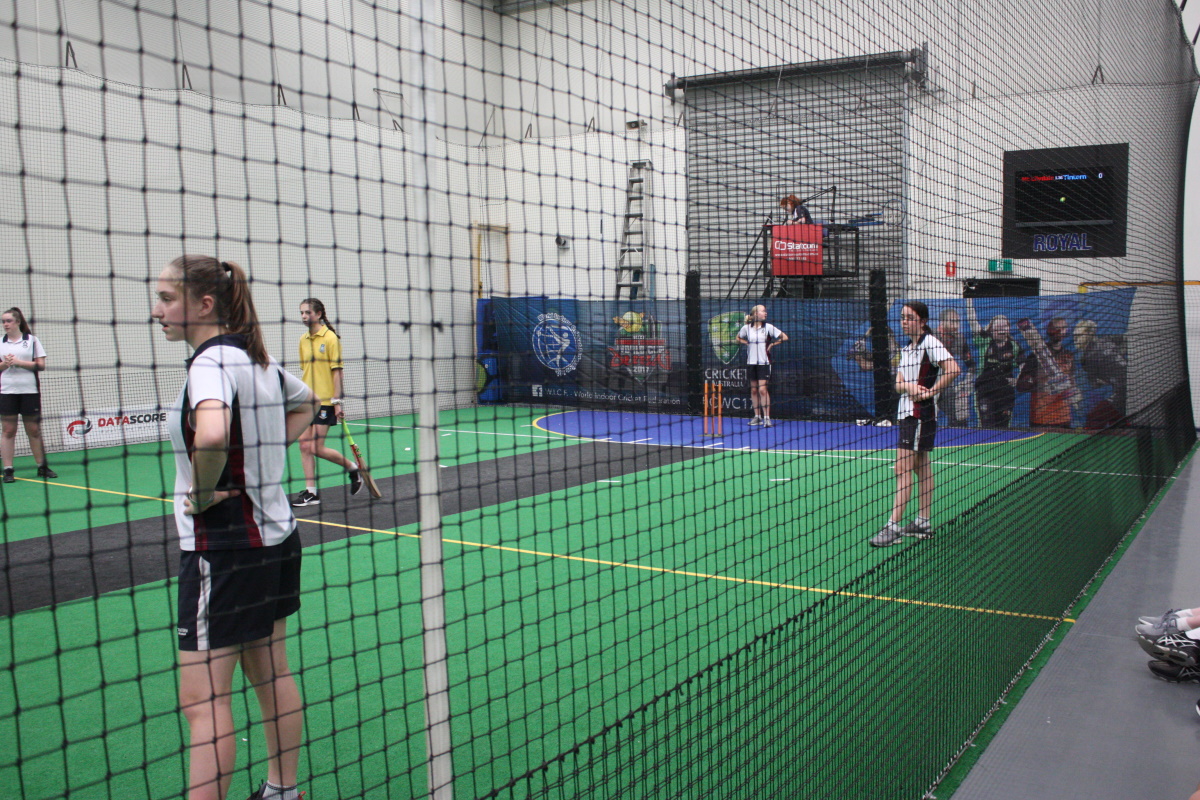Indoor Cricket



- The rules of the AICF, unless contra indicated below, shall apply
- Each game consists of 16 six ball overs.
- Each team consists of 4 batting pairs who bat for four overs per pair. Upon arrival at the crease, the batters are to inform the umpire of their Christian name.
- Batters bat for the duration of the 4 overs. Wickets lost result in the loss of 5 runs.
- Each member of the fielding team is to bowl 2 overs. Inform the umpire as to the name of the bowler before the over starts.
- If a team is a player short, the captain of the fielding team nominates who bats a second time in the last group of 4 overs. The captain of the batting team will nominate which two players will bowl the 15th and 16th overs.
- Max. 4 players can field in either half of the court. Fielders cannot move to the other side of the court until the ball is struck by the batter or the batter strikes at the ball.
- The wicketkeeper is another fielder who stands behind the stumps. The wearing of gloves by the keeper is optional. Only the wicketkeeper is allowed in the wicketkeeper’s area before the ball is played at by the batsman. The keeper must take position with both feet inside the
designated area. - The ball is “live” once the umpire calls “play”. The ball remains “live” throughout the over until the umpire calls “dead ball”, “over”, “time out” or a wicket falls. The game becomes “live” again when the umpire again calls “play”.
- Runs are scored by:
- Running between the batting creases
- Hitting the side net (1 run)
- Hitting the side net beyond the running crease (2 runs)
- Hitting the back net (4 runs)
- Hitting the back net on the full (6 runs)
- Umpire calls of “no ball”, “wide” or “leg side” are worth 2 runs to the batting team.
- Bowlers need to inform the umpire if they change bowling from one side of the wicket to the other or a no ball will be called. A “throw”, ball bouncing more than twice, breaking field restrictions, hitting nets, not landing the ball on the pitch or the ball passing over the batters’
shoulder when in a normal batting stance is a no ball. - A wide is when the ball passes on the offside, outside the intersection of the batting crease and the edge of the pitch. A leg side wide is called when the ball passes outside the batting crease and the leg sideline. It is not a wide if it contacts the batter.
- As well as being bowled, caught, stumped, LBW, hit wicket, “Mankad” and runout, a player can be dismissed for interference if the umpire thinks a batter deliberately interferes with the ball when it’s in play. A “Mankad” should only be used after a warning.
- Teams can consist of 10 players, eight of whom can bat and 8 that can bowl. Players are permitted to substitute fielding during the game.
- Umpires and match balls to be supplied by the centre.
- Girls can bowl a ball underarm if they have had unsuccessful attempts to bowl overarm. The first bounce must land over the 2/3 line marked on the pitch and cannot bounce more than twice before reaching the batsman.
- Recommended Safety Equipment:
Batter (compulsory): Cotton/Batting gloves, Box.
WicketKeeper: Gloves, Box.
Close Fielder – in front of wicket: Box.
Mercy Rule:
There is no specific Mercy Rule in this sport. No maximum winning margin. No negative scores with Indoor Cricket.
Tied Grand Final:
Where the scores are tied at the end of the game, it will be deemed as shared premiership




